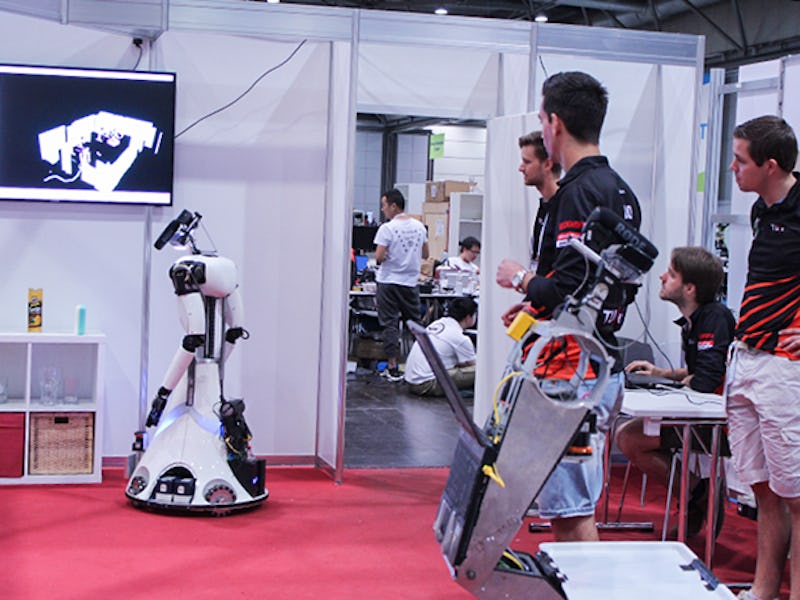A team of engineers and programmers from Tamagawa University won first place at RoboCup, an international competition for in-home robots held in Nagoya Japan over the weekend.
The team, which calls itself Hibikino-Musashi, programmed a Human Support Robot manufactured by Toyota that can move and pivot in any direction, recognize specific people, and follow spoken commands to find and retrieve various objects and perform other household tasks.
The ultimate goal of the competition is to develop autonomous robots that can live alongside humans and ubiquitously help them with everyday life. In an interview, one member of Hibikino-Musashi said that he hopes “to be able to build robots that can be friends with humans.”
At this year’s RoboCup competition that ran from July 27th through the 30th, Hibikino-Musashi took first place in the RoboCup@Home League Domestic Standard Platform, one of three competitions for in-home robotics. In other events, teams could construct their own robots or program a different standard-issue model. Robocup was founded in 1997, but the RoboCup@Home leagues weren’t added until 2006. This particular event didn’t include a monetary prize, but the team received a trophy.
Hibikino-Musashi won because they successfully programmed the Toyota robot to recognize and acknowledge the crowd before following specific commands to find, grab, and fetch specific objects from an unfamiliar person who doesn’t usually work with the robot. For example, the robot may have to follow people around a room or fulfill an order for a specific drink.
The Toyota robot was programmed to follow complex commands like opening a drawer and fetching something from inside.
The RoboCup@Home competition shows how autonomous robots could replace the artificial intelligence personal assistants of today, including the Amazon Echo. While Echo employs advanced voice recognition software and can handle a number of tasks, having a humanoid robot follow you around your home opens all kinds of doors for people, even the literal ones. It makes sense, then that Amazon sponsored some of the events at this year’s RoboCup.
But this is no small task. In the same video interview, another member of Hibikini-Musashi describes how she is solely responsible for teaching the team’s robot to measure and grab objects on command. She describes how something that comes naturally to most people is very difficult for a robot, because it has to translate the data from its video feed into a real-world action. Often, robots will measure wrong or fail to grasp the object correctly.
To see the team from Tamagawa University talk about their project, watch the video below.
